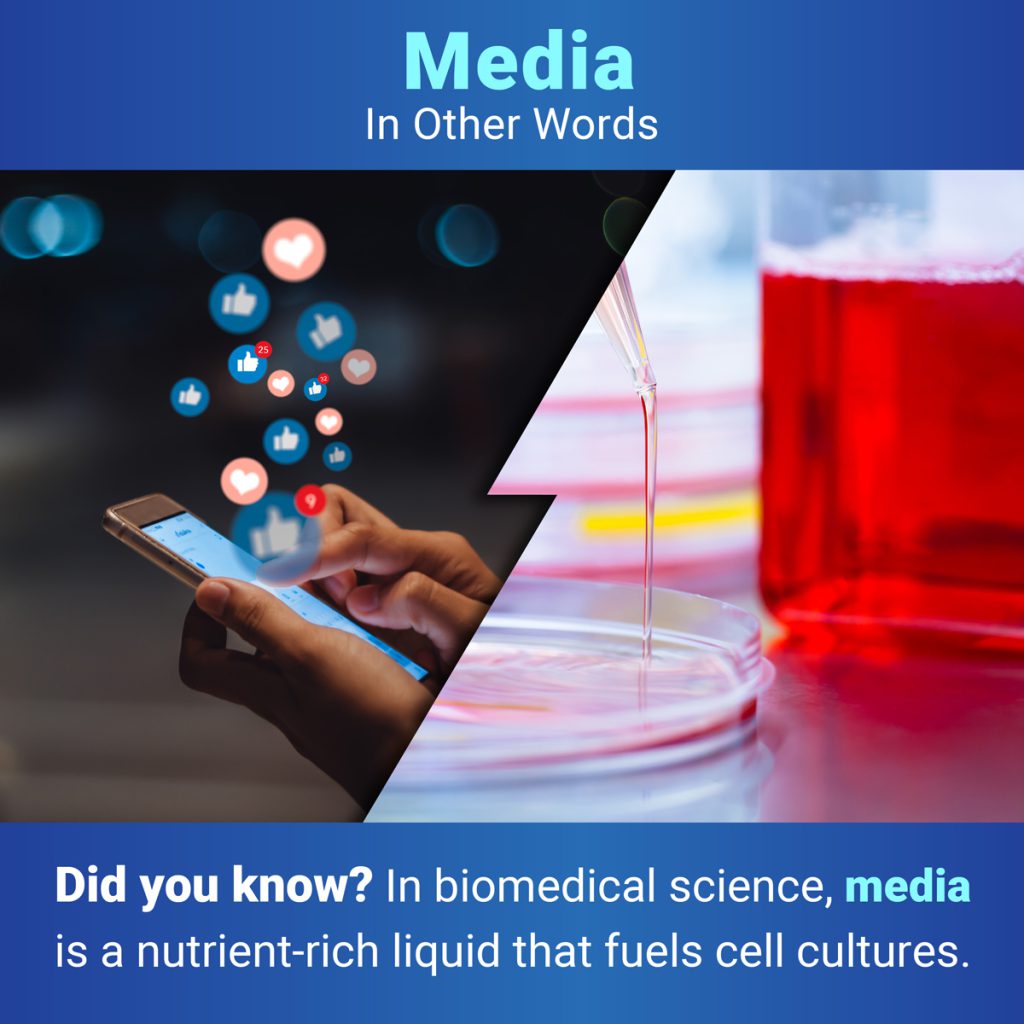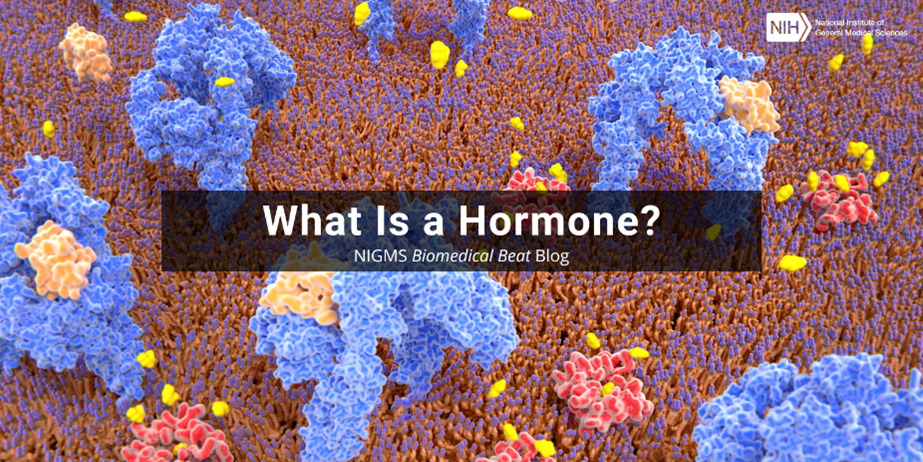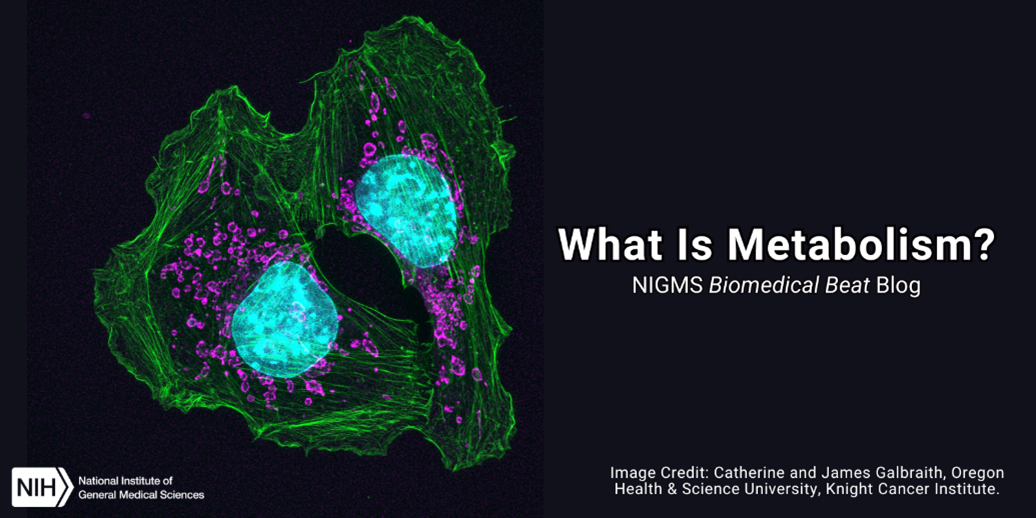The word media may make many of us think about media outlets where we get our news or social media where we keep up with friends. But to biomedical researchers, media is a nutrient-rich liquid that fuels cell cultures—groups of cells grown in a lab. Scientists grow many types of cultures in media, from bacteria to human cells. They use these cultures to learn about basic biological processes and to develop and test new medicines.

The Basic Needs for Life
Like all of us, cultures need specific nutrients and conditions to survive. A cell culture’s media provides those nutrients and is an ideal environment for growth and division. The components of a media usually include:
- An energy source, such as the sugar glucose
- Amino acids and vitamins that cells need but can’t make on their own
- Short peptides that tell cells to grow and divide
- A buffer to keep the pH of the media within a range that cells can live in
- A color-changing dye that indicates the pH of the media
- Antibiotics to prevent the growth of unwanted microorganisms
Every cell type has its own requirements. Some need more or less of an ingredient, and some need a certain kind of peptide, so researchers follow a specific media recipe for each cell type.
As cells in a culture grow and replicate, they use up the energy and amino acids in the media. In addition, cell growth and division release ions that make the media slightly more acidic. For these reasons, scientists must regularly provide their cultures with fresh media. The color-changing dye provides scientists with a visual cue that the cells need fresh media.
The next time you find yourself checking the news or social media, take a moment to remember how a very different type of media empowers biomedical research.
If you think of another word that means one thing in everyday conversation and something else in science, let us know in the comments below. We might feature it in a future blog post!







